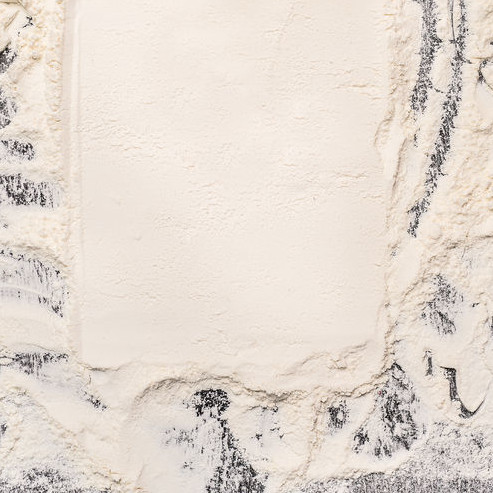
Protein in Flour
What is protein in flour?
Protein content and quality of baking flours are vital functional, nutritional and economical parameters for millers and bakers. They determine whether a given flour is suitable for either:
- Yeast-leavened bakery products that require higher levels of protein in flour (pan bread, buns, hearth breads)
- Chemically-leavened products that need lower protein levels (cookies, cakes and biscuits)1
The protein content of wheat flour varies widely from 6–18% depending on the type or class of wheat milled, growing conditions, and fertilizer inputs, particularly nitrogen.2 Quality of flour proteins is determined by the levels and distribution of individual protein fractions, mainly gluten, gliadin and glutenin which vary among types of wheat and their growing conditions as well as processing methods mainly milling.
How does it work?
In the cereal processing industry, there are official methods for determining the protein content of flours. The methods include:
- AACC International Method 46–10 — Crude Protein. The Kjeldahl procedure
- AACC International Method 46–30 — Crude Protein Combustion nitrogen analysis (CNA)
The Kjeldahl procedure has been replaced by CNA in most laboratories, as CNA provides greater precision along with freedom from the corrosive chemicals required for Kjeldahl analysis. In addition, the CNA method is more efficient at recovering nitrogen, resulting in values that are consistently higher than Kjeldahl values.2
The CNA method relies on high temperature combustion in a fully automated protein analyzer. It assumes that protein is the principal flour compound that contains nitrogen. Thus, the amount of nitrogen released during combustion is converted to protein content.3
Protein content results are expressed as a % of the total sample weight after factoring in its moisture content The latter may vary from one flour to another. The following equation can be used to convert any protein analysis to any moisture basis:4
- A = Analysis percentage (protein content) at the desired moisture basis
- B = Analysis percentage (protein content) originally determined
- C = Desired moisture basis (usually 14% for reporting lab results)
- D = Moisture percentage originally analyzed (actual value)
The AACCI Method 46–30 consists of the following steps:3
- Weighing a sample of flour or ground wheat (0.15 to 0.20 g) and placing it into a CNA protein analyzer.
- The sample is automatically dropped into a hot oven where it is burned at 952°C (1,746°F)
- Protein content in the sample is determined based on the amount of nitrogen gas released during combustion. The above formula is applied to convert this measurement to protein content.
Various methods can be used for measuring moisture content of flour. Recently, near-infrared reflectance analysis (NIR) has been introduced to many laboratories due to its ease of operation, adaptability to for online and rapid determination of moisture as well as protein and ash. For accuracy, results from NIR need to be properly calibrated against those of Kjeldahl or CNA.5,2
The choice of a method for protein flour protein content determination is a function of cost, time and availability of equipment and qualified operators.
Application
Protein in flour is very important for bakers and millers. The following are some reasons:
- Functional performance: Protein content can impact many functional properties of the flour and doughs/batters such as water absorption, cohesiveness, viscoelasticity, dough strength, texture, loaf volume, and crumb grain.2,6
- Economics: The higher the protein content, the higher the value (price) of the flour.
- Processing and handling: Doughs from high-protein flours are physically stronger and more stable than those made with lower protein content, which make them more resistant to punishment in high-speed lines. High-protein flours also require more water and longer mixing times to achieve optimum dough development and consistency.
References
- Delcour, J.A., and Hoseney, R.C. “Structure of Cereals.” Principles of Cereal Science and Technology, 3rd edition, AACC International, Inc., 2010, pp. 6–8.
- Carson, G.R., and Edwards, N.M. “Criteria of Wheat and Flour Quality.” Wheat Chemistry and Technology, 4th edition, AACC International, Inc., 2009, pp. 97–118.
- Wheat Marketing Center, Inc. “Wheat and Flour Tests: Moisture Content.” Wheat and Flour Testing Methods: A Guide to Understanding Wheat and Flour Quality, 2004, p. 15.
- Finnie, S., and Atwell, W.A. “Wheat and Flour Testing.” Wheat Flour, 2nd edition, AACC International, Inc., 2016, pp. 60–61.
- Posner, E.S. “Flour Handling and Blending.” Wheat Flour Milling, 2nd printing, AACC International, Inc., 2011, pp. 291–327.
- Finnie, S., and Atwell, W.A. “Composition of Commercial Flour.” Wheat Flour, 2nd edition, AACC International, Inc., 2016, pp. 31–48.

